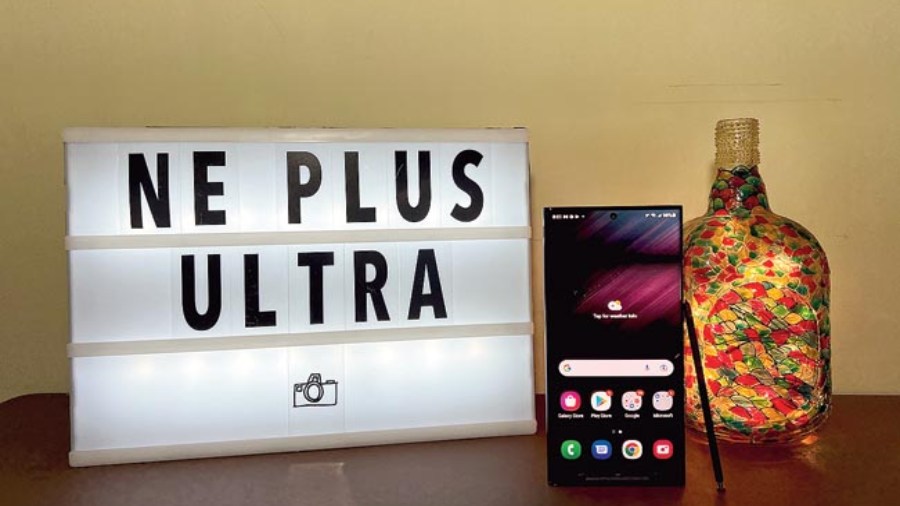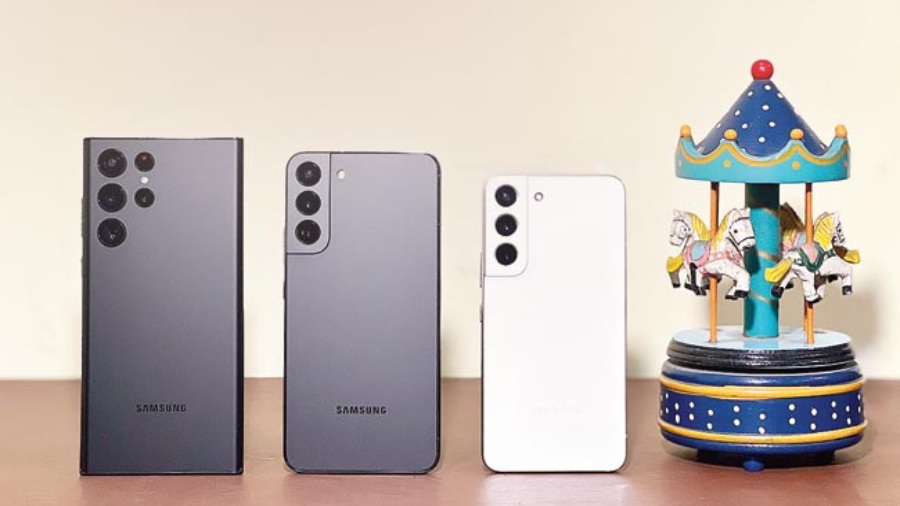The offerings from Samsung’s latest flagship series have zero compromises. It doesn’t matter if you are using the behemoth of a display on the Galaxy S22 Ultra or the compact 6.1-inch screen on the Galaxy S22. Well, 6.1 inches is not exactly small but the phone has been designed to appear compact; it’s clever designing. The logic: Compromises need not be made in the camera department or the processor or the UI. It’s a flagship series with flagship specs.
In fact, the Galaxy S22 series may well end the year winning at least two of the three best-Android-phone slots of the year. It’s that good. And the UI comes with a great deal of fluidity. What the three phones in the new series have managed to do is work on camera tuning to the point that pictures have a natural feel. There is no oversaturation, no over-sharpening. But taking photographs is not enough. The same needs to be reproduced on the display for editing.
“You can easily compare our 108MP (on the Ultra) with other devices and in 108MP camera we provide different kinds of technology, like Fusion and Adaptive Pixel,” says Dr. Sungdae Joshua Cho, head of visual SW R&D group at mobile division of Samsung Electronics. He is in charge of developing camera-related software, including camera system, framework, applications and AR services for Galaxy smartphones and tablets and has led the team in charge of developing AI software for Galaxy devices starting with the S9. Adaptive Pixel is a very interesting and beneficial technology to have. It combines a full-res shot with the pixel-binned image to give all the details possible.
In case you are serious about mobile photography, check out what you can do with RAW images. To get the best out of this format, use the Expert RAW app from the Galaxy Store. It’s a versatile app that supports HDR multi-frame capture and lets you save shots in JPEG and DNG RAW formats. You will have control over the final image in the form of ISO, shutter speed, white balance and so on. Plus, the app also has integration with Adobe Lightroom, which means, users can open their RAW shots into the app for final edits.
“Users don’t have to carry all the different lenses. Using a smartphone you can enjoy four different lenses. When you take a RAW image, you can micro-manage. So, there are exposure controls and there’s a tool to easily change the hue,” says Joshua.
Improvements on the camera front have taken a new shape this year through a tight collaboration with Instagram, Snapchat and Tik Tok. Usually, third-party camera apps on Android do a poor job with pictures, which is not the case with iOS. When it comes to iOS, developers need to come up with only one set of software tricks for the camera set up but with Android, there are a zillion combinations because there are many device manufacturers. It’s impossible for app developers to work on many versions of the camera interface for various brands. That changes this year. Many of the popular social media apps can take advantage of the Samsung camera.
“Now Snapchat users… when they use a Samsung phone… they can use Samsung-specific camera functions,” says Joshua. In Snapchat, users can find the night mode and also zoom function and experience optimisation with many functions. Try using Snapchat on the Galaxy S22 Ultra and the camera does justice to your photo skills, plus it can take advantage of the S Pen.

The biggest device of the series is the Galaxy S22 Ultra which comes with the S Pen
Ultimately, display kicks in and most of the photo correction we do is on the smartphone itself, meaning if the calibration on the display is not correct, pictures won’t come out well. The company, known to come up with the best displays globally, always works extra hard to make the screen shine. This year hasn’t been an exception. “The role of a good display is to accurately render the data which has been tuned with the camera hardware and software. So, the camera and the display team worked closely together so that the tuned data which has been captured by the camera software and hardware would be accurately and vividly rendered by the display in order to provide you with the best quality image and so the camera division really drives this initiative and the display team is really focused on how to best and vividly express and show what the camera has captured,” says Byung Duk (BD) Yang, vice-president and head of display, R&D group in MX business at Samsung Electronics. His team is responsible for developing the display, touch and S-Pen technologies for Galaxy devices, including the S22.
The other area where the screen shines is how it tackles the S Pen on the Galaxy S22 Ultra. Latency is almost nonexistent. “You would notice that our latest stylus has significantly reduced latency. We have heard from our consumers that it’s almost close to a real pen-on-paper experience; there is almost no noticeable difference between our stylus experience and a real pen on paper experience. And, of course, we can keep enhancing and developing this technology to lower the latency over and over again. But that also comes with the trade off in other aspects of the device. And therefore, it’s really important for us to identify how much is a meaningful improvement for our consumers,” says Byung.
In case you are in the market looking for a flagship Android phone, the new Samsung Galaxy S series has plenty to offer in way of features and consistent performance.
